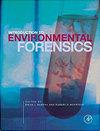Metal pollution source apportionment in two important Rivers of Eastern Cape Province, South Africa: a case study of Bizana and Mthatha Rivers
IF 1.2
4区 环境科学与生态学
Q4 ENVIRONMENTAL SCIENCES
引用次数: 0
Abstract
Abstract Regular monitoring of the chemical status of water bodies remains crucial in countries where data on chemical fingerprints that can assist in environmental policy is still limited. The current study focused on the concentrations of 14 metals and their sources in two important South African rivers that pass through various rural areas and two semi-urban towns in the province of the Eastern Cape. Most of the essential metals were within the South African guidelines for domestic water use except for selenium and iron which reached the concentrations of 131 and 712 µg L−1 that exceed the guideline values of 20 and 200 µg L−1, respectively. Cadmium and lead were above the South African Water Quality Guidelines and World Health Organization limits of 3 and 10 µg L−1, attaining the highest concentrations of 35 and 34 µg L−1, respectively. The impact of the wastewater treatment plant effluent and the municipal dumpsite leachates on metal ion concentrations in the rivers was observed for some metals. The metals source was related to deterioration of galvanized corrugated steel sheets from scrap yards and dwellings made-out of galvanized corrugated sheets, as well as agricultural activities and natural geological processes. An overview of the current water quality status of the two rivers may serve as a basis for sink-oriented pollutant fingerprinting toward sustainable water sources for communities.南非东开普省两条重要河流的金属污染源分析——以比扎那河和姆塔塔河为例
在一些国家,定期监测水体的化学状态仍然至关重要,因为这些国家的化学指纹数据可以帮助制定环境政策。目前的研究集中于14种金属的浓度及其在南非两条重要河流中的来源,这两条河流流经东开普省的各个农村地区和两个半城市城镇。除了硒和铁的浓度分别达到131和712 μ g L - 1,超过了20和200 μ g L - 1的指导值外,大多数必需金属都在南非家庭用水指南范围内。镉和铅均高于《南非水质准则》和世界卫生组织规定的3和10 μ g L - 1的限值,最高浓度分别为35和34 μ g L - 1。观察了污水处理厂流出物和城市垃圾场渗滤液对河流中某些金属离子浓度的影响。金属来源与来自废料场和由镀锌波纹钢板制成的住宅的镀锌波纹钢板的变质以及农业活动和自然地质过程有关。对两河水质现状的概述可以作为面向汇的污染物指纹识别的基础,为社区提供可持续的水源。
本文章由计算机程序翻译,如有差异,请以英文原文为准。
求助全文
约1分钟内获得全文
求助全文
来源期刊

Environmental Forensics
环境科学-环境科学
CiteScore
4.90
自引率
5.60%
发文量
23
审稿时长
3 months
期刊介绍:
Environmental Forensics provides a forum for scientific investigations that address environment contamination, its sources, and the historical reconstruction of its release into the environment. The context for investigations that form the published papers in the journal are often subjects to regulatory or legal proceedings, public scrutiny, and debate. In all contexts, rigorous scientific underpinnings guide the subject investigations.
Specifically, the journal is an international, quarterly, peer-reviewed publication offering scientific studies that explore or are relevant to the source, age, fate, transport, as well as human health and ecological effects of environmental contamination. Journal subject matter encompasses all aspects of contamination mentioned above within the environmental media of air, water, soil, sediments and biota. Data evaluation and analysis approaches are highlighted as well including multivariate statistical methods. Journal focus is on scientific and technical information, data, and critical analysis in the following areas:
-Contaminant Fingerprinting for source identification and/or age-dating, including (but not limited to) chemical, isotopic, chiral, mineralogical/microscopy techniques, DNA and tree-ring fingerprinting
-Specific Evaluative Techniques for source identification and/or age-dating including (but not limited to) historical document and aerial photography review, signature chemicals, atmospheric tracers and markets forensics, background concentration evaluations.
-Statistical Evaluation, Contaminant Modeling and Data Visualization
-Vapor Intrusion including delineating the source and background values of indoor air contamination
-Integrated Case Studies, employing environmental fate techniques
-Legal Considerations, including strategic considerations for environmental fate in litigation and arbitration, and regulatory statutes and actions
 求助内容:
求助内容: 应助结果提醒方式:
应助结果提醒方式:


